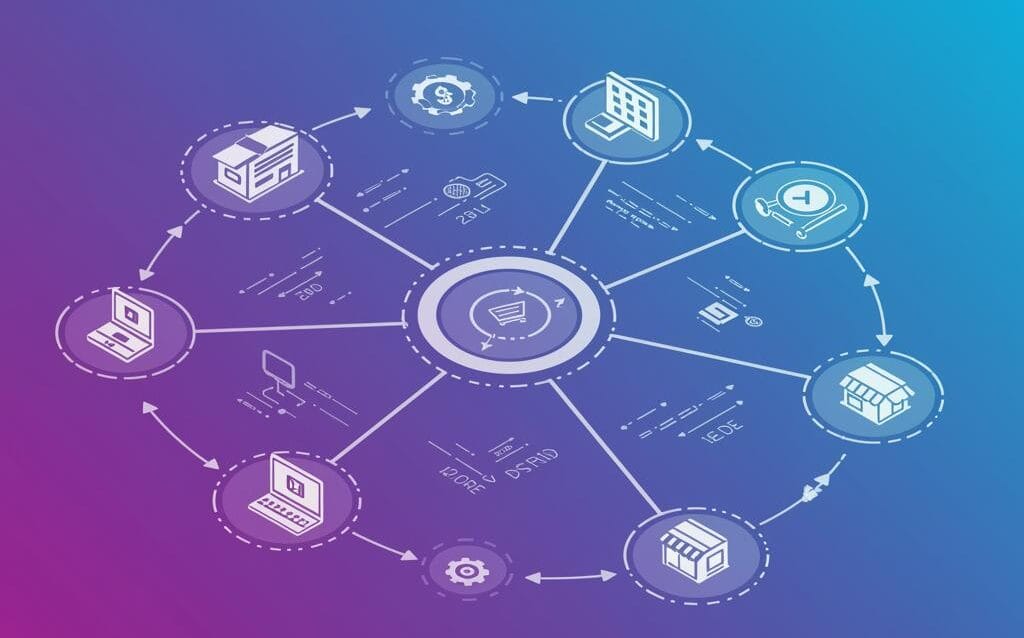Omnichannel Inventory: Tech Implementation Guide
Omnichannel Inventory Management: Technical Implementation
Omnichannel inventory management is no longer a futuristic concept; it’s a business necessity. Customers expect seamless experiences whether they’re shopping online, in-store, or through a mobile app. To meet these expectations, businesses need a robust technical infrastructure that accurately tracks and manages inventory across all channels in real-time. This blog post delves into the technical implementation of omnichannel inventory management, providing practical insights and guidance for businesses looking to optimize their operations.
Understanding the Technical Foundation
The Core Components
A successful omnichannel inventory management system relies on several key technical components working in harmony:
- Centralized Inventory Database: This is the heart of the system, providing a single source of truth for all inventory data. It should be capable of handling large volumes of data and supporting real-time updates.
- Order Management System (OMS): The OMS manages the entire order lifecycle, from order placement to fulfillment and delivery. It integrates with the inventory database to ensure accurate stock levels and efficient order routing.
- Warehouse Management System (WMS): If you have a physical warehouse, the WMS optimizes warehouse operations, including receiving, storage, picking, packing, and shipping. It needs to synchronize with the OMS and inventory database.
- Point of Sale (POS) System: For brick-and-mortar stores, the POS system records sales transactions and updates inventory levels in real-time.
- E-commerce Platform Integration: Seamless integration with your e-commerce platform is crucial to display accurate product availability and process online orders effectively.
- Reporting and Analytics: Tools for analyzing inventory data, identifying trends, and generating reports to optimize inventory levels and improve decision-making.
Data Synchronization and Integration
The key challenge in omnichannel inventory management is ensuring data consistency across all these systems. This requires robust integration mechanisms and real-time data synchronization. Common approaches include:
- APIs (Application Programming Interfaces): APIs allow different systems to communicate and exchange data in a standardized format. Using APIs is the most common and flexible approach for integrating various components.
- ETL (Extract, Transform, Load) Processes: ETL processes extract data from different sources, transform it into a consistent format, and load it into the centralized inventory database. While useful for historical data and reporting, they may not be ideal for real-time synchronization.
- Message Queues: Message queues provide asynchronous communication between systems, ensuring that data is delivered reliably even if one system is temporarily unavailable.
Choosing the right integration approach depends on the complexity of your systems, the volume of data, and the required level of real-time synchronization.
Implementing Real-Time Inventory Updates
Event-Driven Architecture
To achieve real-time inventory updates, consider adopting an event-driven architecture. In this approach, systems react to events (e.g., a sale, a shipment, a return) and update inventory levels accordingly.
- When a sale occurs (e.g., through the POS system), an event is generated.
- This event is published to a message queue.
- The inventory management system subscribes to this queue and consumes the event.
- The system updates the inventory database in real-time.
This approach ensures that all systems are notified of inventory changes immediately, minimizing discrepancies and improving accuracy.
Technology Choices
Several technologies can support real-time inventory updates:
- Cloud-based Inventory Management Systems: These systems offer scalability, reliability, and real-time capabilities. Examples include NetSuite, Fishbowl Inventory, and Cin7.
- Message Queues: Popular message queue technologies include Apache Kafka, RabbitMQ, and Amazon SQS.
- Databases: Databases like PostgreSQL, MySQL, and MongoDB can be used for storing inventory data. Consider using a database with strong support for transactions and real-time updates.
Optimizing Inventory Allocation and Routing
Intelligent Order Routing
Omnichannel inventory management enables intelligent order routing, allowing you to fulfill orders from the most efficient location. This can involve considering factors such as:
- Inventory availability: Fulfill orders from the location with sufficient stock.
- Proximity to the customer: Ship from the nearest location to minimize shipping costs and delivery times.
- Fulfillment costs: Consider the cost of fulfilling the order from each location, including labor, shipping, and handling.
- Inventory aging: Prioritize selling older inventory to reduce the risk of obsolescence.
Allocation Strategies
Effective inventory allocation strategies are crucial for preventing stockouts and ensuring that products are available when and where customers need them. Common strategies include:
- Safety Stock: Maintaining a buffer of inventory to protect against unexpected demand fluctuations.
- ABC Analysis: Categorizing inventory based on its value and prioritizing the management of high-value items.
- Demand Forecasting: Using historical data and statistical techniques to predict future demand and adjust inventory levels accordingly.
Security and Compliance Considerations
Data security and compliance are paramount when implementing omnichannel inventory management. You need to protect sensitive customer and inventory data from unauthorized access and ensure compliance with relevant regulations, such as GDPR and PCI DSS.
Security Measures
- Data Encryption: Encrypt data both in transit and at rest to protect it from unauthorized access.
- Access Controls: Implement strict access controls to limit access to sensitive data to authorized personnel only.
- Regular Security Audits: Conduct regular security audits to identify and address vulnerabilities.
- Penetration Testing: Perform penetration testing to simulate real-world attacks and identify weaknesses in your security posture.
Compliance Requirements
- GDPR (General Data Protection Regulation): If you operate in Europe, you need to comply with GDPR requirements for protecting customer data.
- PCI DSS (Payment Card Industry Data Security Standard): If you process credit card payments, you need to comply with PCI DSS requirements for securing payment card data.
- Data Privacy Laws: Be aware of and comply with all applicable data privacy laws in the regions where you operate.
Conclusion
Implementing omnichannel inventory management requires a significant technical investment, but the benefits are substantial. By centralizing inventory data, integrating disparate systems, and optimizing inventory allocation, businesses can improve customer satisfaction, reduce costs, and increase efficiency. Careful planning, robust technology choices, and a focus on security and compliance are essential for a successful implementation. Embrace the technical challenges and reap the rewards of a truly unified omnichannel experience.

